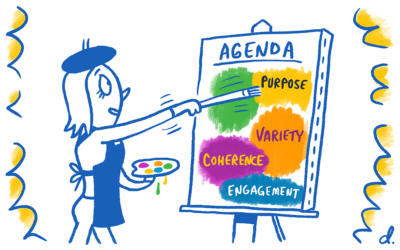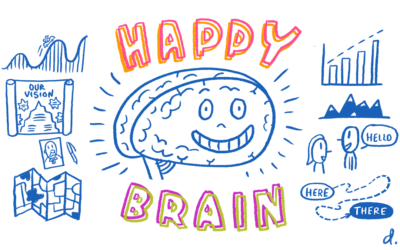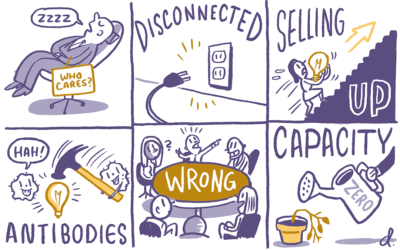There, I said it. And this is from a consultant WHO runs meetings for a living.
The question of whether robots and AI are going to take our jobs has been a burning topic recently.
Discerning which activities are truly human – requiring creativity, awareness, empathy, connection – and those which could be adequately handled by robots, is a juicy and controversial topic of discussion.
Well, I have an idea: Let’s turn all of our crappy business meetings over to robots. By crappy business meetings I mean those ineffective, boring, poorly managed meetings that afflict us at an epidemic level all around the world.
A recent HBR survey indicated that 60% of executives said that meetings are the biggest hindrance to their productivity.
And we all feel it. When people attend boring business meetings their productivity decreases––studies suggest even their intelligence decreases! Turning these crappy meetings over to robots would be a godsend, saving time, cutting costs, and making employee satisfaction spike!
And it would be easy––because most business meetings are already better designed for robots than they are for people. Think of how robotically we go through the motions of scheduling, designing, and behaving in our daily meetings.
Did you know that 99% of business meetings use only three conversation types––called micro-structures?
They are:
1. Stand & Deliver (an individual talking at you, presenting a topic, often with a Powerpoint deck)
2. Managed Discussion (a leader offers a topic, opens a discussion, and then controls how the conversation proceeds)
3. Open discussion (aka “brainstorming”; a conversational free-for-all that proceeds for a time with little support or structure)
These familiar micro-structures are not necessarily bad. But if you dined at a restaurant that served only three never-changing menu items, you’d go somewhere else to get some variety. Yet for some reason we accept these three rather dull types of conversations in meetings and never question it.
What the big three conversations have in common is the passive experience they produce for participants.
Open discussions, while purporting to invite open participation, often feel disempowering. One need only to Google the word “brainstorm” to learn all the ways people feel pain when asked to participate in “forced creativity” exercises.
We can do so much better. There exist dozens (maybe hundreds) of structures that could be used to change things up.
Meetings can be designed to distribute control, engage all participants and be tailored precisely to achieve the desired meeting outcomes.
There are structures for generating ideas, evaluating ideas, making decisions, resolving impasses, aligning misaligned teams, imagining yourselves traveling in time…I could go on and on.
Robots would be okay with the same three menu items repeated over and over, mind-crushing boredom doesn’t bother them––so let them have those kinds of boring meetings. Over time, machine learning would even allow robots to decipher those dense, 80-slide Powerpoint decks nobody understands.
So what about the remaining 5% of meetings, the keepers? Or what if your company isn’t quite ready to take me seriously on handing off the crappy meetings to robots?
Start designing meetings as if each one was a high-stakes endeavor––and take the needs of your human participants seriously.
We humans crave connection, challenge, relevance, engagement, emotion, and variety. We get bored and mentally fatigued from sameness and repetition. We learn better when we’re engaged by novelty, when we use pictures, diagrams, mental models, and compelling stories.
Thoughtfully structured meetings create immediate results.
People wake up and tune in. They notice their time is being respected and that they are truly being invited to bring their best thinking. Meetings become a place where work actually happens and decisions are made quickly.




